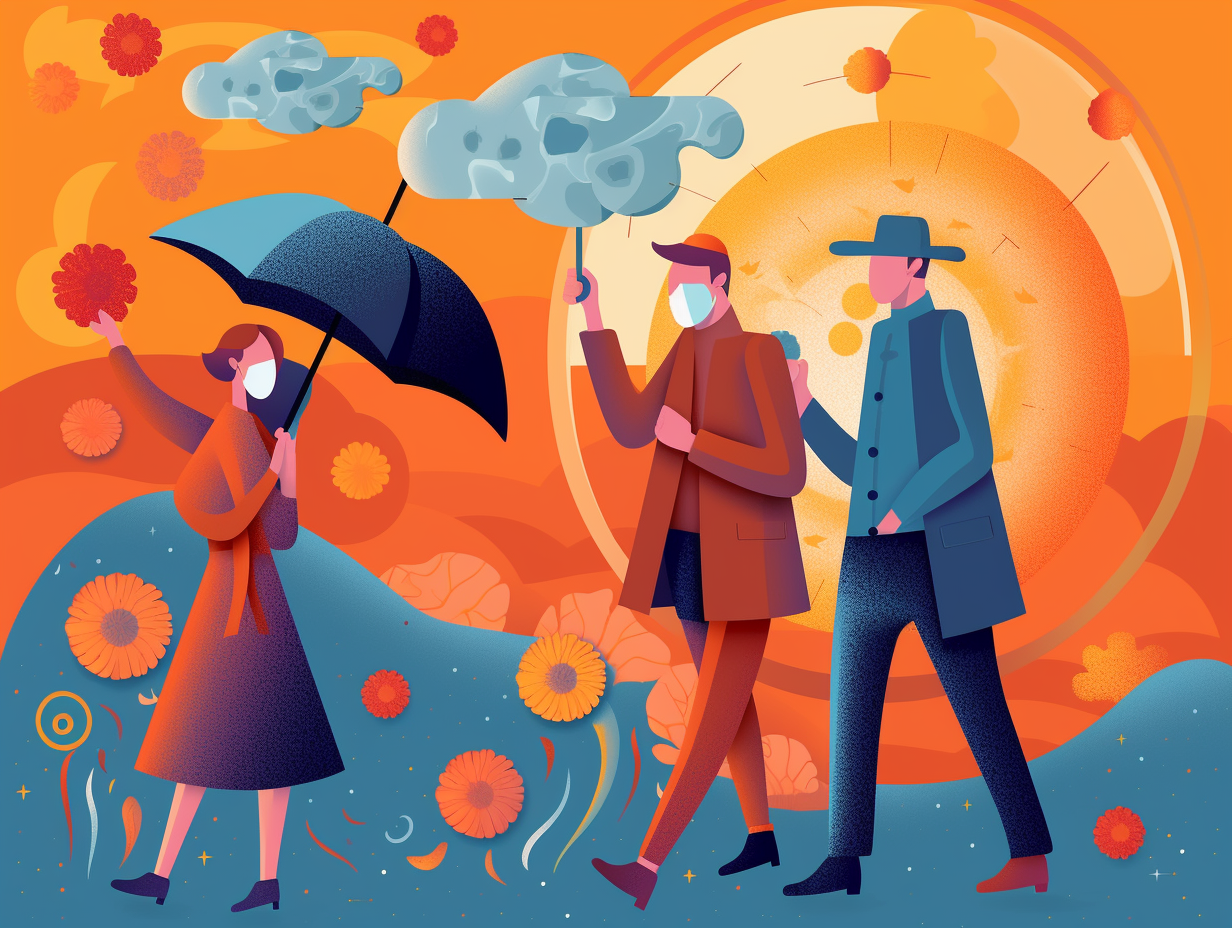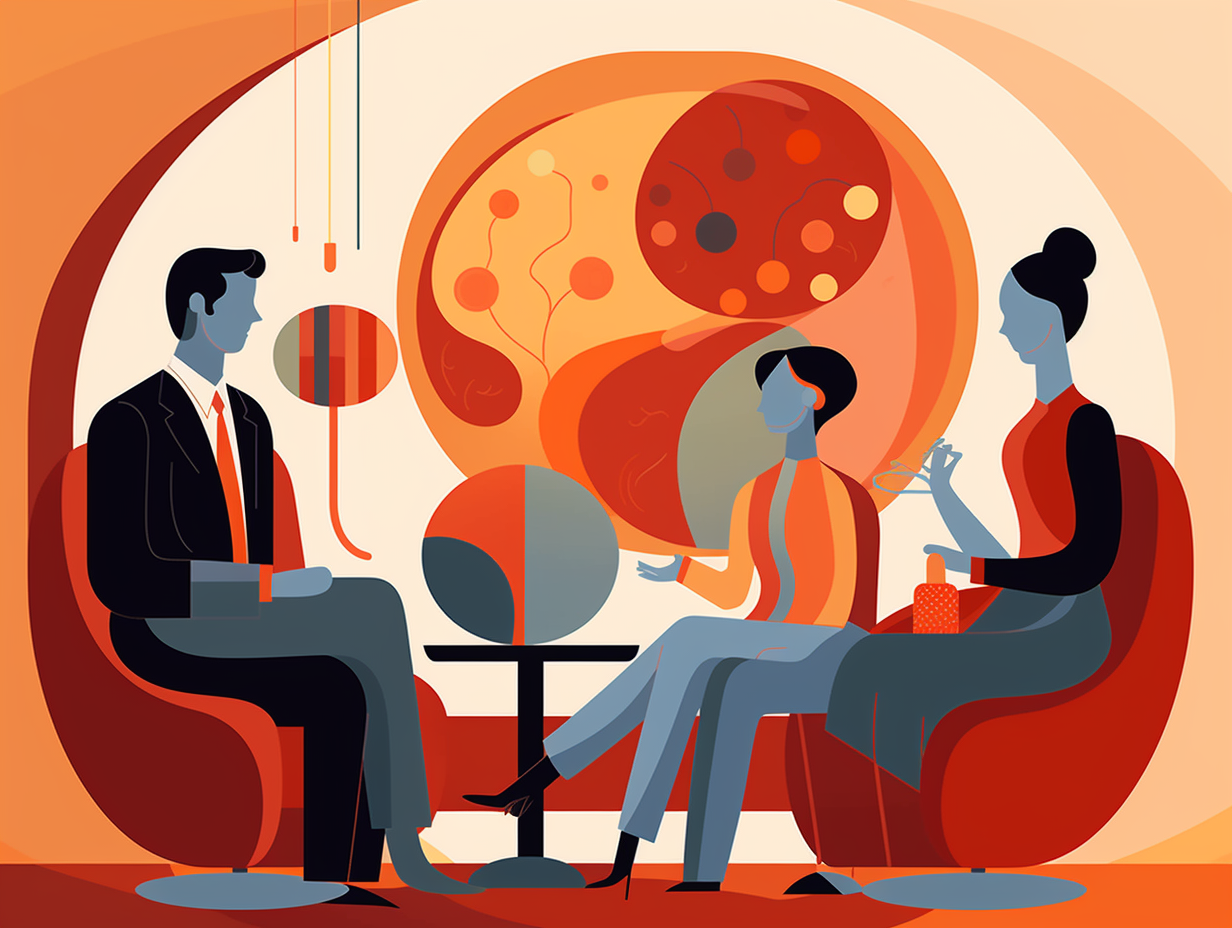Discover the Amazing World Within: Top 25 Fun Facts About Your Nervous System!

1. The Flashy Neuron Duo
Did you hear about the dynamic duo that can give Flash a run for his money? They're a hoot at parties, and can't be caught; they're faster than lightning, and move with grace: Meet neurons and neurotransmitters, the nerve cells responsible for transmitting information in the nervous system. They use a mix of impressive electrical signals and charming messenger molecules called neurotransmitters to keep everything running smoothly and efficiently.
Source => ncbi.nlm.nih.gov
2. Neural Dimmer Switch Dance
Dimmer switches and dance floors have more in common than you'd think: they both make things brighter by cranking up the frequency! Behold the science: the intensity of the signal in the nervous system is conveyed by the frequency of nerve impulses, not their size, so when you turn up the dimmer switch, the rapid-fire impulses tell your brain it's party time with more light.
Source => mammothmemory.net

Did you know your brain cells have a sweet tooth? They run on sugar and consume 20% of your body's energy supply! Discover more about these fascinating neurons and their glucose cravings.
=> Fun Facts about The-Brain
3. Brain's Built-In Alarm Clock
Like your very own built-in alarm clock that never needs batteries, your brain beeps and boops to keep you awake or snoozy: Your circadian rhythm, the brain's internal clock, regulates your sleep-wake cycle, responding to environmental cues such as light and temperature. Unfortunately, this organic timekeeper can be disrupted by stress, medication, or an adventurous jet-setting lifestyle, leading to sleep disturbances and fatigue. Fear not! A healthy dose of daytime sunbathing and a digital detox before bedtime can help realign your sleep-wake harmony.
Source => ninds.nih.gov
4. The 86 Billion Neuron Brain
Move over, "100 billion neuron club," we're about to burst your brain bubble: recent studies reveal that the human brain actually has around 86 billion neurons, putting us on a cellular par with our fellow primates.
Source => pnas.org

5. Brain's Networking Event
If the human brain were a networking event, it'd be the most obnoxiously well-attended shindig in history: with over 100 billion neurons chattering away, these social butterflies connect through approximately 100 trillion synapses to share the juicy gossip that controls our thoughts, actions, and reflexes.
Source => ncbi.nlm.nih.gov
6. Sympathetic and Parasympathetic Drama
Who would've thought our insides have intriguing soap operas? There's an adrenaline junkie dubbed the "sympathetic nervous system" constantly seeking thrills, and the chillaxed "parasympathetic nervous system" ever on standby to bring the balance: These dramatic protagonists form a thrilling trio along with the enteric nervous system, controlling our body's involuntary antics; "fight or flight" palpitations, blood pressure spike-fests, and down-to-earth "rest and digest" moments.
Source => ncbi.nlm.nih.gov
7. Gut's Professor X
Who would've thought our gut had the smarts of Professor X's less famous sibling?: The enteric nervous system, our very own gastrointestinal psychic, utilizes the same cells and chemicals as our brain to aid in digestion and keep the cranial command center updated on the latest gut happenings, with an impressive network that even outnumbers the nerve cells in our spinal cord.
Source => hms.harvard.edu
8. Brain's Inner DJ
Did you know the brain has an inner DJ, constantly remixing the balance between excitatory and inhibitory neurons to keep our mind's house party bumping? Color us impressed: Studies on mice found that the brain can maintain stable network dynamics even when the ratio of excitatory and inhibitory cells drastically changes, showcasing the incredible adaptability of our nervous system.
Source => pnas.org
9. Universal Language of Laughter
Who says laughter isn't a universal language? Our brains sure seem to think otherwise: The right hemisphere of the brain plays a key role in emotional processing and perception, revealing that it's not just the left hemisphere that takes care of language, while the right exclusively handles emotions – both sides come together in harmony for a well-rounded emotional communication experience.
Source => ncbi.nlm.nih.gov

10. Cold Case of Ice Cream Headaches
Ice cream headaches – nature's not-so-sweet revenge for daring to enjoy a chilly dessert without a care in the world! These mysterious "frozen brains" make us think twice before diving into a cold delicacy. But fear not, for science has cracked the cold case: Brain freeze is caused by rapid cooling and rewarming of the capillaries in the sinuses, causing vasoconstriction and vasodilation that affects the sensitive nerves in the palate, creating that dreaded sensation. But worry not, fellow ice-cream enthusiasts – a warm drink or a quick press of the tongue on the roof of the mouth can save you from the clutches of frosty vengeance.
Source => medicalnewstoday.com
11. Lightning-Fast Neurons
Hold onto your hats and glasses, folks, because your neurons are faster than a speeding ticket on the Autobahn: Neurons in your body can transmit information at speeds of up to 200 miles (322 kilometers) per hour, allowing for lightning-fast communication between them and enabling our body's split-second reactions to potential dangers.
Source => kids.nationalgeographic.com
12. Tattletaling Stomach-Brain Connection
Feeling pangs of guilt after devouring an entire pizza? Turns out, your stomach might just be spilling the beans to your brain: The gut maintains a direct connection to the brain through a neural circuit that tattletales on our eating habits by sharing info on the contents of our guts in real time. Not only that, but your gut can boost your mood, too, as stimulating sensory neurons can increase dopamine levels in the brain, making eating a truly feel-good experience!
Source => science.org
13. Nerve Cells' Formula 1 Speed
Ever heard of the world's fastest chatterbox? We're not talking about Sally from accounting but something even faster: Nerve cells, ladies and gentlemen! Sending signals at a speed that'll give Formula 1 cars a run for their money: Did you know that some nerve cells can transmit messages at breakneck speeds of up to 120 meters per second (270 miles per hour) thanks to the help of myelin, a fatty substance that acts as an electrical insulator? This lightning-fast communication within our nervous system allows us to react to potential dangers, like a surprise encounter with a hot iron or a tactless joke, within milliseconds.
Source => scienceline.ucsb.edu
14. Myelin Sheath's Bouncer Role
If our nerves were throwing a party, the myelin sheath would definitely be the event's speedy bouncer, ushering electrical impulses straight to the VIP section: This essential insulating layer of protein and fatty substances ensures that electrical impulses zip through the nervous system without a hitch, as damage to or loss of the myelin sheath can lead to diseases like multiple sclerosis. Keep your bouncers intact, and the nerve party never slows down!
Source => medlineplus.gov

15. Goldilocks Nociceptors
Move over, Goldilocks – your porridge problems have nothing on human nociceptors! These picky little pain detectors are the divas of our nervous system, complaining about everything from scorching hot coffee to frosty cold ice: Our peripheral sensory neurons actually contain distinct types of nociceptors that specialize in reacting to specific noxious stimuli, such as extreme temperatures, intense pressure, or tissue-damaging chemicals. These versatile pain virtuosos not only alert us to potential dangers, but also provide researchers with a diverse range of qualities to study for developing targeted pain-relief therapies.
Source => ncbi.nlm.nih.gov
16. Receptor Issues in Therapy
Why did the neurotransmitter go to therapy? Because it had a serious case of receptor issues! Seriously though: the nervous system has two major types of neurotransmitter receptors - ligand-gated ion channels that allow ions to flow directly across cell membranes, and G-protein-coupled receptors, which initiate chemical signaling within the cell.
Source => ncbi.nlm.nih.gov
17. Afferent and Efferent Neurons' Road Trip
Why did the afferent neuron get a ticket for speeding while the efferent neuron took its sweet time? They had different destinations on the Neural Circuit Express: Afferent neurons swiftly carry information towards the central nervous system, efferent neurons leisurely carry information away, and interneurons just hang around for local circuit chitchat. So, buckle up and enjoy the fascinating ride of the nervous system's diverse neurons!
Source => ncbi.nlm.nih.gov
18. Introverted Electrical Synapses
Did you know that neurons are like that introverted friend who knows all your secrets but is really bad at gossip?: Electrical synapses allow for superfast communication between neurons, but they suffer from a serious lack of adaptability and can't change from positive to negative messages like their chemical counterparts.
Source => byjus.com
19. Hippocampus' Ocular Tango
Ever wondered why your eyes dart around like a caffeinated hummingbird when you're trying to remember something? Surprise, surprise: it's your hippocampus! This memory maestro also moonlights as a visual dance choreographer, guiding your eyes as you store new info. The more complex and intricate your ocular tango, the better your memory will be – so it turns out, the eyes truly are the windows to the soul (and our brain's recollections)!
Source => ncbi.nlm.nih.gov
20. Visual Cliff Baby Daredevils
Ready to jump off the "Visual Cliff" into a world of depth-perception acuity? Hold on to your monocles, because this one's gonna be a hoot-and-a-half!: Most infants are actually born with innate depth perception, and the Visual Cliff test proves it. These tiny humans and their animal compadres—such as cats, dogs, owls, and monkeys—rely on binocular and monocular cues to form their perception of depth, making them natural pros at navigating their surroundings right from the get-go.
Source => encyclopedia.pub
21. Practice Makes Basal Ganglia
Remember when your mom told you that practice makes perfect? Turns out, she was talking about your basal ganglia all this time! Yep, these brainy maestros are responsible for turning your floundering first attempts into those smooth moves you've been bragging about: The basal ganglia, a subcortical group of nuclei, are the MVPs when it comes to forming habits and controlling voluntary motor movements, as well as routine behaviors. So, next time you evaluate your habits, just remember it's all about keeping your basal ganglia in check!
Source => medium.com
22. Muscle-Bound Puppet Master
In a nod to Shakespeare's famous quote, "All the world's a stage, and all the men and women merely muscle-bound puppets," it might surprise you to learn that even though we might think our muscles are responsible for our strength, it's actually our nerve cells that pull the strings and make us dance: The true powerhouse behind our movements is a complex neuromuscular system, where motor neurons communicate with muscles to make them contract, thanks to chemical signals from the brain.
Source => healthdirect.gov.au
23. Body's Tiny Tightrope Walkers
Get your measurements tape ready because here's a long story: our body is home to the world's tiniest tightrope walkers, performing jaw-dropping balancing acts to deliver messages from head to toe! The not-so-secret behind-the-scenes star: nerve cells, also known as neurons, can stretch up to a staggering 3 feet in length to rapidly transmit signals, both electrically and chemically, throughout our body's intricate communication system.
Source => ncbi.nlm.nih.gov
24. Skin's Fabulous Four
Feeling touchy can really tickle your nerves, especially when it comes to the skin's fabulous four: Merkel's disks, Meissner's corpuscles, Ruffini endings, and Pacinian corpuscles! These MVPs of tactile mechanoreceptors detect touch, pressure, stretching, and vibration, playing a crucial role in our ability to perceive fine details and textures better than a keen-eyed Sherlock Holmes.
Source => opentextbc.ca
25. Nervous System's Secret Society
Imagine your nervous system being a secret society of neurons, communicating through molecular whispers and holding unique skills like a band of eccentric superheroes: In reality, every neuron (or group of neurons) within the cortex is highly unique, possessing distinct regional variations, macromolecular assemblies, receptor repertoires, and intrinsic microcircuitry, with action potentials playing a versatile role in local-global communication and information processing.
Source => ncbi.nlm.nih.gov
Related Fun Facts




















